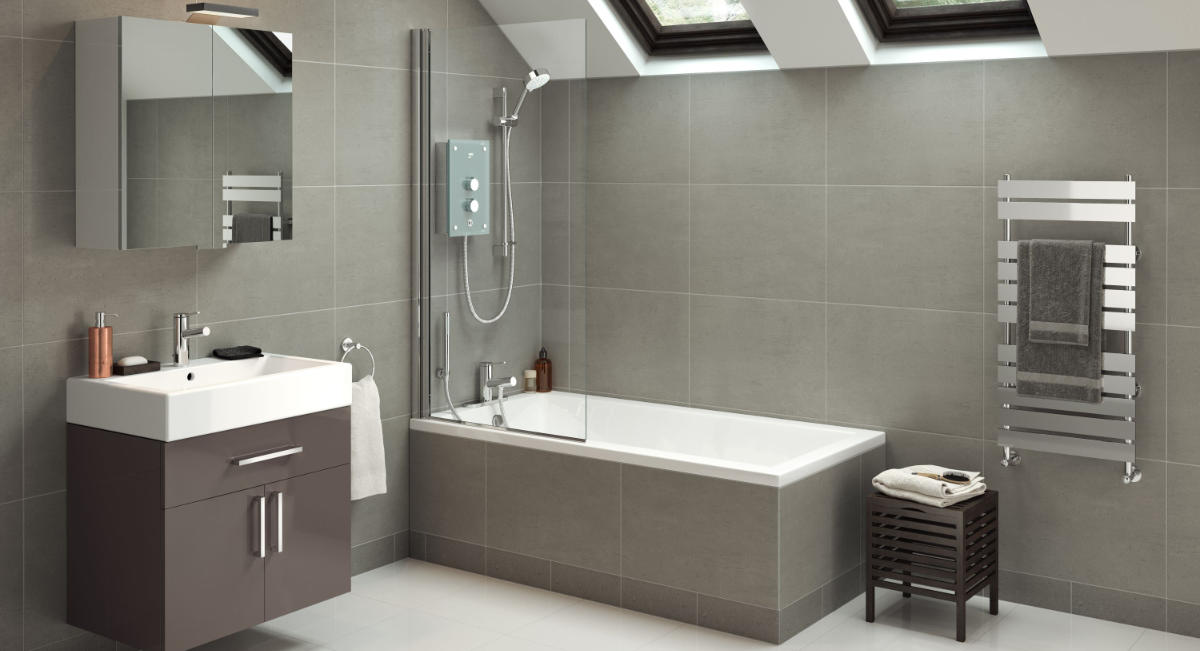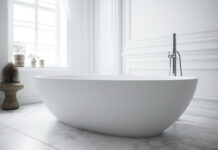There are few things more satisfying than working up a sweat in the gym, before popping home for a relaxing soak in the shower. Conversely, there are few things more annoying than stepping into the shower and finding it intemperate, malfunctioning, or just plain bad. That’s when you know you need a shower replacement – but what should you consider when upgrading or replacing your shower?
Shower replacement guide
It’s probably fair to say that the average Brit logs roughly 48 hours in the shower every year (based on the assumption you shower daily for the frequently-cited eight-minute average). So whether you’re renovating, restructuring, or simply replacing, it’s well worth getting it right. Whether you have a broken shower that needs replacing or simply want a better shower experience, take some time to think through what you need from a shower replacement.
Over the years, there have been many revolutionary shower models and designs released onto the market. From the introduction of electric showers in the Sixties to the Eighties witnessing the creation of different showerhead models and body jets, the humble shower has come a long way.
Thinking of upgrading yours? Here, an expert shares five essential things you need to know before upgrading your shower…
8 things to consider when upgrading your shower
1. Water pressure and space
A functional item first and foremost, a new shower comes with a host of technical and structural considerations you’ll need to take stock of in advance.
First, you need to determine your home’s water pressure, as a cutting-edge, many-nozzled power shower will be reduced to a trickle without the water pressure to back it up. There are ways to do this yourself, but we recommend calling in a professional. When plumbing goes wrong, it goes really wrong, so if you don’t already know how to do it – don’t.
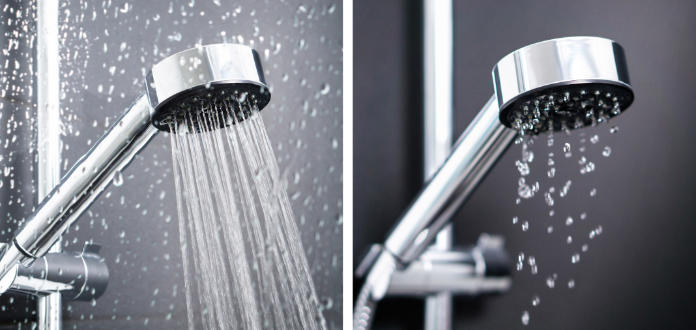
Consider the heights of your shower’s likely occupants – if you cohabitant is 6ft 9 and sports a mohawk, you might at least want a shower that’s adjustable. Do you want a hand-held, detachable shower, or are you happy with a fixed model that protrudes directly from the wall?
Think also about space – if you’re kitting out a wet room, you can employ more powerful units with potentially high splash damage, while narrower spaces might be better served with more concentrated flow.
2. Check plumbing before buying
It’s surprising how many homeowners don’t know the type of plumbing system installed in their home. However, if you’re planning on having a new shower installed, this is the first thing you need to find out, to make the process smoother and ensure the model you choose is compatible with your home’s plumbing.
“If you have a cold-water tank in your loft, and a hot water cylinder in your airing cupboard, then you most likely have a gravity system,” says Roland Boal, lead industrial designer at Mira Showers.
“If you have a boiler the size of a small kitchen cupboard somewhere in your house, and you don’t have [separate] hot and cold-water tanks, then this is most likely a high-pressure system,” Boal adds.
3. Choose the right shower type
You might think there’d be only so many ways of ejecting water through a nozzle, but depending on preference and plumbing, there’s a whole host of different models and methodologies.
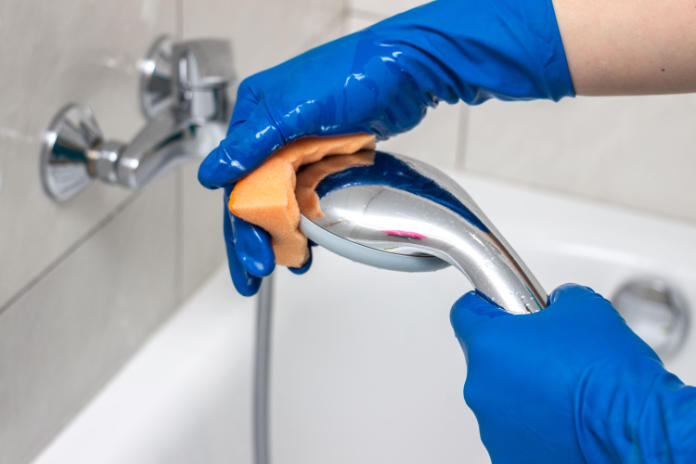
- Mixer shower
This is an easy-to-install, all-purpose design that combines hot and cold water to reach the desired temperature. It’s simple but effective, and requires independent hot and cold water supplies. Add a splash of modernity with a thermostatic mixer, which comes with a valve used to closely control temperature. You can add a pump for systems struggling with low pressure.
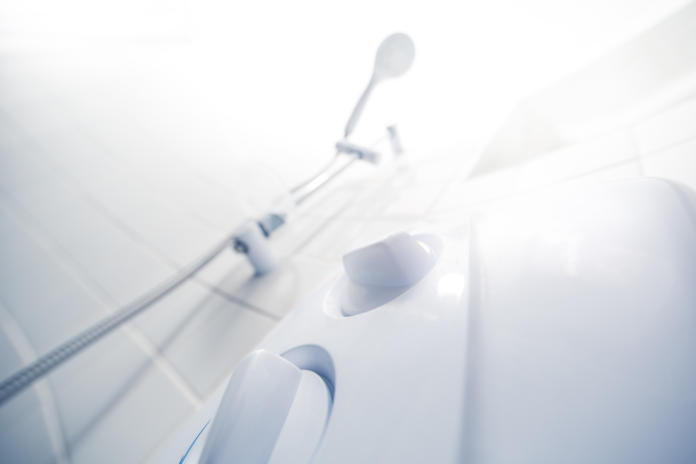
- Electric or power shower
Electric models are essentially in-built water heaters, that rapidly warm water on the way to the showerhead. Economical, because it only heats what you use, these showers can function without an independent hot water supply.
In normal parlance, ‘power shower’ just means ‘powerful shower’, but technically the term refers to a unit with an integrated pump that boosts flow with both hot and cold. Showers have a rep for saving water, but some modern high-impact power showers can outstrip the average bath in less than five minutes. Eco-conscious consumers should consider water-saving, ‘aerated’ shower heads, which preserve water by injecting the flow with air. - Digital shower
For next-level washing, you can opt for a digital shower, which maintains the balance of temperatures with an electronic processor, generally controlled from a nearby panel.
4. Shower replacement design
There are as many different bathroom designs as there are bathroom designers, but for the sake of simplicity, we can split the shower aesthetic into two categories: Modern and traditional.
The classic modern shower is chrome-coloured and shiny, made up of sleek, straight-lined, angular shapes, and goes well in minimalist, white-washed bathrooms decorated with marble or textured tile.
Traditional shower heads tend to value elegance. Think circular ‘watering can’ styles, exposed fittings, vintage valves and ceramic handles. While chrome can be integrated into a classic look, more luxurious builds have expanded into brass, nickel and even gold.
Naturally, you can mix old and new at your leisure, and your best bet is to embark on some window shopping.
5. Bathroom layout and design
More and more importance is being placed on bathroom design, with an array of bathroom designers offering all sorts of shower replacement models, from sleek and modern to functional and eco-friendly.
So you might be surprised by just how much choice is out there – and because there is so much to choose from, it’s a good idea to do a little research and get an idea of what you’re looking for before taking the plunge and upgrading.
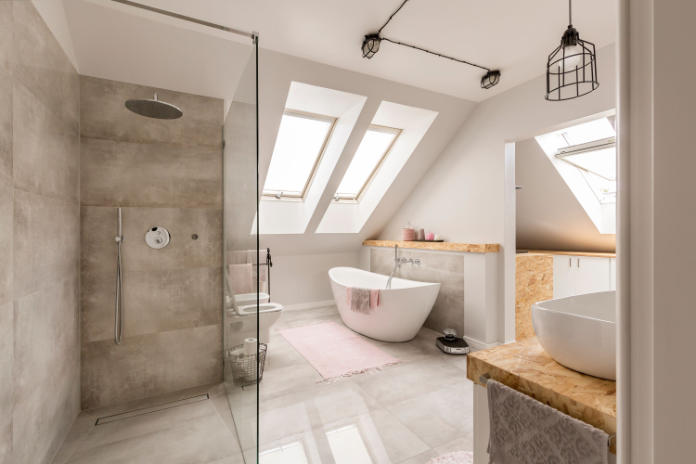
Mar Esteve Cortes, of design company Neolith, says of current bathroom design trends: “In the past, bathroom design has been overlooked as other rooms are prioritised, but we’re seeing interesting trends on the horizon at the moment, including monochromatic colours and seamless, single slabs being used in shower cubicles.
“Walk-in showers are a popular way of optimising space in what is typically a compact room,” Cortes adds. “Using the same material inside and outside the shower evokes a sense of continuity, rather than segmenting the area into smaller sections, creating the illusion of more space than there actually is.”
6. Shower accessories
For those looking for more from their bathroom routine, there’s a variety of high-end shower replacement designs to make your morning wash experience a bit more bespoke.
Particularly popular right now are ‘rain showers’ – huge, flat, ceiling-mounted (usually) units that deluge the showerer with vertical streams of water. No prizes for guessing where they get their name.
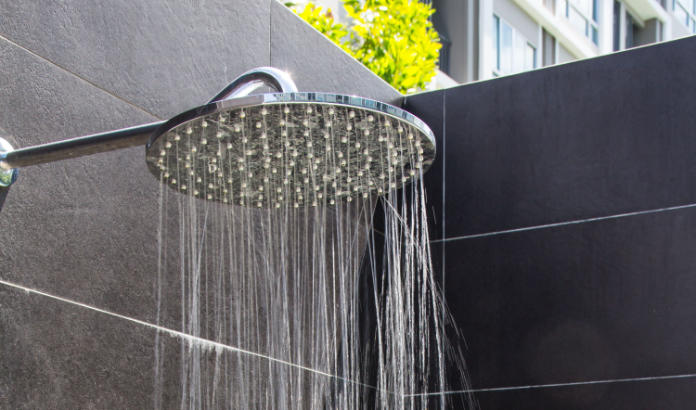
Inevitably, in the era of remote-controlled toasters and voice-activated toilets, there are also smart shower options that can integrate with household AI. Take, for instance, the SmarTap, which warms up automatically in line with your routine, and can be programmed to stop after a set amount of time. It can also warm your towel rail.
At the very pinnacle of luxury, there are even showers with horizontal body jets lined up down the walls. Expect a bill in the thousands – and that might just be for installation.
7. Energy efficient shower replacement
According to the Environment Agency, the average UK household uses 140 litres of water each day, with showers being responsible for around 30% of this.
But as well as improving the style and functionality of your bathroom, looking to upgrade your shower could be an opportunity to make your home a little more planet-friendly too, and help reduce your energy bills in the longer term.
Andy Grigor, head of design and dnnovation at Methven, says: “Making your bathroom more eco-friendly can save you money in the long run. If you’re looking to save on your energy bills, opting for a low-flow shower handset is one of the simplest ways to do this.”
If nothing wakes you up in the morning more than a power shower (which, naturally, tend to use more water), consider trying an ‘air shower head’ instead – these are designed to mix air and water in order to create the feel of a power shower while still being more energy and water-efficient.
8. Shower replacement techology
With technology becoming more advanced year after year and increasingly featuring in our homes, it should probably come as no surprise that this now extends to the realm of showers, too.
Whether it’s controlling your shower settings via the clock of a button or through an app, or having screens and speakers installed, bathroom design can now be pretty high-tech.
And this doesn’t stop at design features inside the shower, either – there are smart options for guarding against leaks and water damage, for instance, too.
Matt Poll, CEO and founder of the UK’s first smart home insurance provider, Neos, says: “Smart home technology is a great option to look into when upgrading your shower, allowing you to help prevent leaks escalating. Some insurers now offer smart home technology as part of your package, so it’s worth looking around to see what you can get.
“If you’re having complex pipework laid, for example a wet room, it’s a good idea to look into some wireless, Wi-Fi-enabled leak sensors. They can be installed in minutes and mean the smallest of leaks can be detected, both while the work is being carried out and down the line, when the pipework might be hidden away behind tiles.”























































